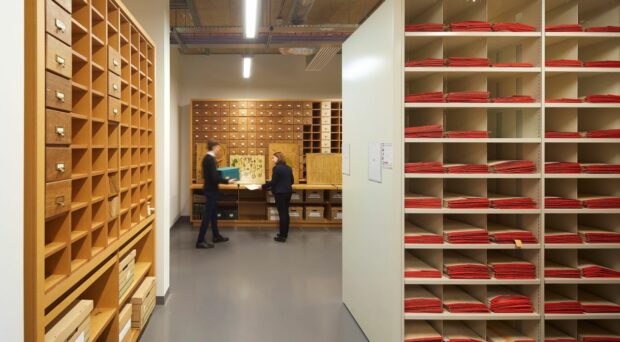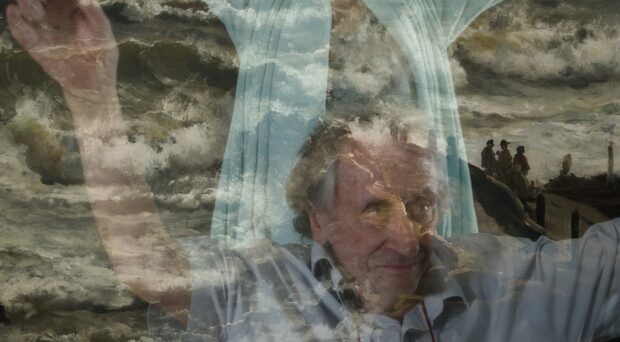The Fitzwilliam Museum invited families to explore its Tensions of Belonging: Connecting Cambridge display through a special drop-in family event designed by members of the community.
For more than a year, the Fitzwilliam Museum has been working with community members in the Connections Through Collections group to ask what happens when we place local residents at the heart of how we expand, develop and use our Museum collections. The group co-curated the current display, Tensions of Belonging: Connecting Cambridge, on until 2 June 2024.
On Saturday 20 April 2024, the Museum held a family day linked to the display. Members of the group created family activities, designed materials, and ran the day alongside Museum staff. In this blog, members of the group – Anasuya, Jade, Sue, Susan and Tim – share their reflections on the event and how it can help shape future activity.
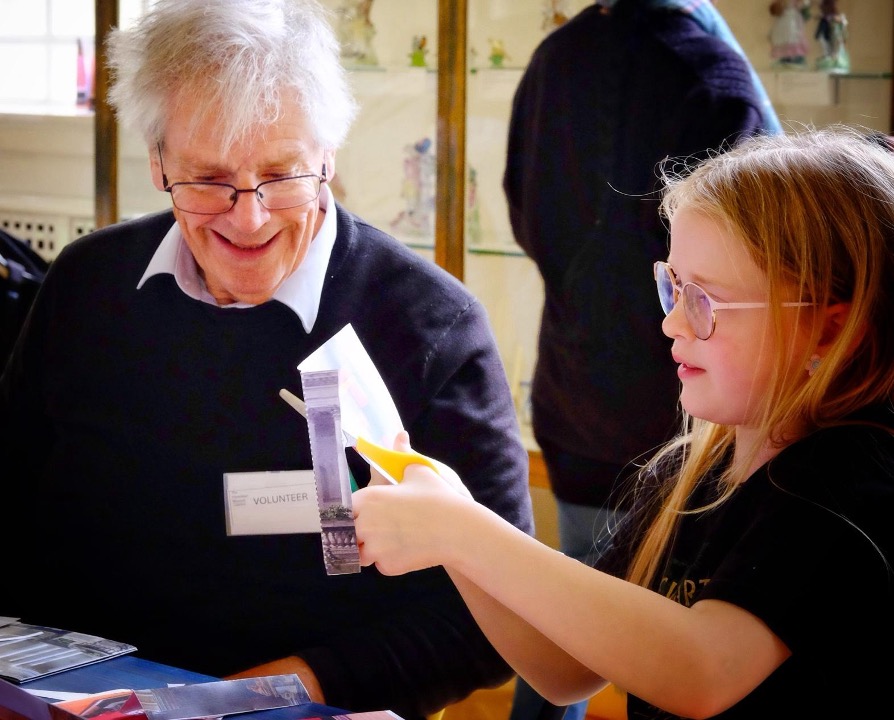
What we did
There were three main drop-in activities, each designed or inspired by the co-curators of the display. Families were able to go between activities at their own pace, creating an energy and buzz in the usually quiet galleries.
The first activity was linked to the vase chosen by group member Kath, which shows the environmental struggles of fish in polluted waters. For this, Play Build Play created a golden river running through the Glashier gallery. Families were invited to colour in and cut out fish that can be found in the River Cam to add to the river.
In the Lower Marlay gallery, Tim had designed the My Museum activity, where families made 3D miniature versions of the Fitzwilliam.
The final activity, located in the Cypriot gallery, was inspired by the ornate fruit stand in the exhibition, chosen by Isaac. Using everyday materials like paper plates and cups, families made their own versions of the fruit stands, getting creative with different design styles.
When they arrived at the Museum, families were given a folder, designed by the co-curators for the event, as space to keep all the fun things created on the day. A set of trail cards, made by the members of Connections Through Collections, encouraged families to explore other parts of the Museum throughout the day.
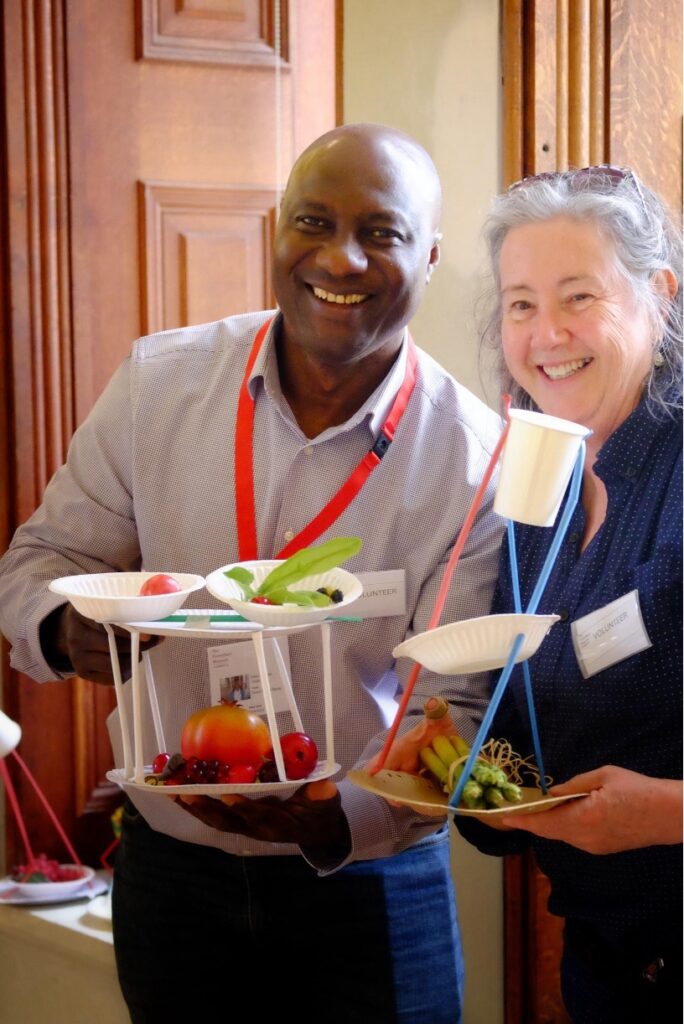
Something for everyone
The activities were designed for children of all ages and backgrounds.
Group member Sue noted that it was good to have something that anyone could do and was able to support a family who had a child with additional needs: “I pointed them in the direction of the golden river. Apparently she loved it and they had a good conversation with museum staff about possible future visits.”
Talking about the My Museum activity, Tim observed: “The activity suited from the youngest to the oldest visitors, including a large group of teenage boys, who I thought making a museum would be beneath them. How wrong was I?”
The level of engagement was high and visitors stayed for long periods enjoying the activities.
Tim continued: “People could take as long as they liked with the activity from just a few minutes to three quarters of an hour or more. Some children received help from their parents, other parents chatted to them about the various objects they were sticking in. While other children were left to go-it-alone while the adults nattered, sometimes discussing the objects on the cut-out sheets. It was a lovely friendly atmosphere, and I’m sure many will go home with happy memories of the day.”
Anasuya said: “The highlights for me were the amount of spontaneous enthusiasm it generated amongst all visitors – from a whole range of age groups. As a volunteer it was wonderful to be witness to this enthusiasm and engagement and to help facilitate it.”
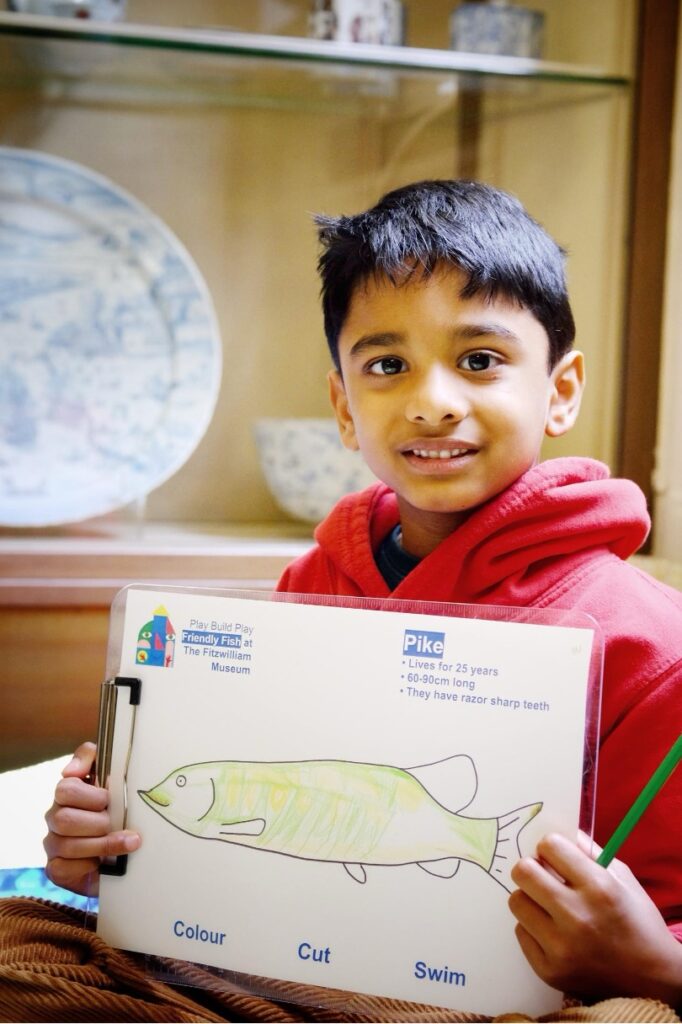
Tensions
As the name of the exhibition suggests, the Connections Through Collections display recognises tensions and inequalities present in Cambridge that can make the Fitzwilliam seem an intimidating place. The family day was specifically designed to be welcoming and inclusive.
Sue said: “One of the tensions we had identified was the tension between town and gown, people seeing the Fitzwilliam as ‘not being for people like them’. This event showed that the Museum is for everyone. Giving children permission to crawl round the floor and be creative broke down barriers and people would like to do it again.”
Susan said: “I felt it was important to hold such an event, not just alongside our display, but the type of event that should be held regularly – open to all and NOT booked in advance. Having one alongside the display could have been an opportunity to show the wider public that the Museum doesn’t just involve academics and ‘posh Museum people.’”
Jade said: “Whilst preparing museums to support Tim’s activity, it was a wonderful surprise to hear from some parents I spoke with that this was actually their first time to the Museum. This has been a hope for us through our entire project; to open the Museum up to wider audiences.
“It was incredible to hear from Nicola Wallis, the Museum’s Practitioner Research Associate: Collections and Early Childhood, that some of the families she works with had brought their children along thus extending the connections the Fitzwilliam is making through its community outreach [and public programming].”
Sue reflected: “This event laid to rest the experiential ghosts such as being told off for letting my children walk on the rugs that were on the floor. People enjoyed themselves and felt welcome; that will encourage them to come back and explore.” This has the potential to have a longer-term impact on how families perceive the Museum.
Similarly, Tim noticed the children “were keen to put their uncut pictures in their folders to finish their museum at a later date, meaning over the following day or two they’ll be thinking about the Fitz and associating it with fun – not a bad thing to happen.”
Tensions of Belonging: Connecting Cambridge is on display until 2 June 2024. Plan your visit to the Fitzwilliam Museum.





